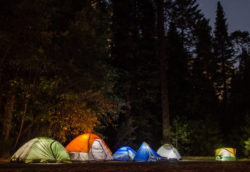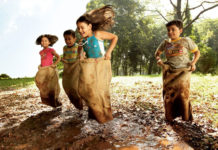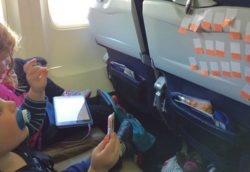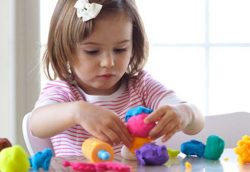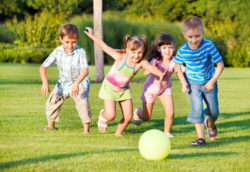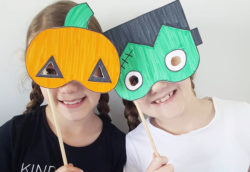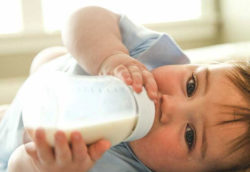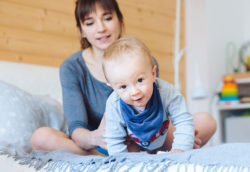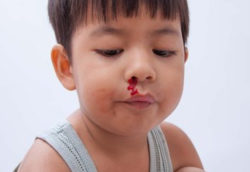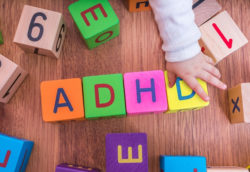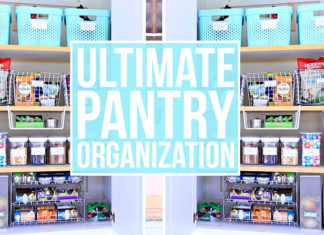Every parent is eager to see their baby crawl. Crawling is enjoying your baby’s first method of getting around effectively on their own. It is surprising that many parents want to know when the babies crawl. We are going to talk about everything you need to know about babies crawling and how can you help them to master their skills.
Once the baby masters the skills of crawling, they are able to explore the world around them without having to rely on you to pick them up every time. So, what does crawling mean? Learning to balance on the knees and hand is the traditional way the baby learns to crawl. While they figure out how to push themselves forward or backward by pushing their knees, they are strengthening the muscles that will soon be required by then to walk.
Every new milestone achieved by your child will be special as there will be many “first time” things happening around you which will be exciting. And trust us when we say this, time will just fly away the day after your little one is born and they start learning new things every day. It is always very exciting for parents to see their child learn and acquire new skills.

From the day the babies are born, they start gaining strength and skills that they need to walk. You might have noticed that the moment you keep your baby in a standing position with the support, their immediate reflex would be to start moving with the legs like walking. Babies learn to push up the head in like about 3 to 4 months and try to support the body with the help of the hands by pushing the stomach up.
It helps in strengthening the upper body with the help of the pushups which is also important for them to stand and walk. In a couple of more months, they start bouncing up and down if they are made to stand. This helps them to build up their leg strength. Post this; the baby is learning to sit up keeping their back straight and stable. They learn to develop balance and coordination during this age. And this is when the baby is also learning to crawl typically between 7th to 10 months old.
But you must not worry if you are baby skips crawling entirely, as it is just fine. By this time the babies can support themselves in a standing position by holding on to something. And soon they will be up into sliding steps and cruising. And thereafter they learn to push themselves up in a standing position. Once the kids master this position, there quickly start taking the steps towards walking without any support.
When Does Baby Crawl?

This is the most common question that parents ask as to when babies crawl for the first time. Crawling in babies might start earlier in some cases as compared to the others. But you must understand that your child is unique and has their own pace of learning. Most baby master the art of crawling between the ages of 7 to 10 months old.
Whereas some baby skips the crawling stage altogether and moves on to the next stage where they try to put themselves up by using the furniture and try to stand. Some baby also prefers to roll, or bottom shuffle or glide across the room. The point is that all babies do not cross the same way and hence you must not be too much worried.
How Babies Learn to Crawl?

So, how do babies start to crawl by themselves? When the baby is learning to fix their head and spend time on their tummy, they are actually in the process of strengthening up their muscles. The baby starts to lie on there for me and left head along with their chest up using the support of the arms. They start to crawl around in a commando way pushing the forearms. The first learn to go upwards backward with the hands straight and body parallel to the floor before the babies start crawling actually.
Next is the stage when they learn to kick their legs or push their knees in order to go ahead. You could always play a toy or their favorite attractive thing in front of them so as to encourage them to push and come forward to grab the toy by themselves. You yourself get a signal of the readiness of a baby to crawl once they start doing mini push-ups. Eventually, they realize that one day pushes up enough to push off their nice as well, they can move on their own.
Don’t worry about the style in which the baby crawls, what is more, important are for them to be mobile. No matter how your baby does it, they should be using their arms and legs equally on both the sides of the body and learn how to coordinate them. You do not have anything to worry in case they know how to do that and skip infant crawling completely. And yes, practice makes a perfect. You will see that your baby is an excellent crawler by the time they turn one.
Different Types of Baby Crawls

Your kids crawling style might not be the same as the others and look a little strange at the first time to you. There are many styles of crawling baby:
- The Classic Crawl: This is the one where the baby moves one arm and the opposite leg together at the same time to push forward.
- The Cross Crawl: Mostly around the age of 9 or 10 months, the baby learning to crawl figures out that Cross crawl is remove an arm and the opposite leg together.
- Scoot: A type of baby crawling style where they drag the bottom across the floor to move.
- The Bear Crawl: This is when the baby walks on all fours; both the arms and both the legs unbent.
- Commando Crawl: This is when the Infants start crawling lying flat on that army and using the arms in order to move forward.
- Crab Crawl: This is a different style of baby crawl when the infants begin to crawl with one knee bent and the other extended, either sideways or forward.
- Backward Crawl: The baby process with arms instead of pull action, which is mostly unintended. It also turns out to be frustrating for the baby and the consequence results in sending the baby backward.
- Leapfrog Crawl: Another awkward style of crawling when the baby makes a bridge with their arms and legs while they trust forward.

The awkwardly crawling baby styles, fortunately, do not mean anything wrong. As we already mentioned, the most important and crucial thing is for the baby to engage in self-locomotion. When the baby learns that they could move on their own, they might just pick up any of the method rather than the traditional technique.
As your little one makes their way through the house, you can expect them to go through a range of different emotions. I would be frustrated with the different types of obstacles that would block their way. The babies are highly excited when find or explore something while crawling, however, might be highly disappointed when you remove it or take it away.
As a parent or a caretaker, you will be on a constant duty of keeping an eye on your child for safety. You might also be a threat sometime when you suddenly find your baby right on your heels. The baby learns to pick up the pace with time and experience. They start climbing the stairs with this art of crawling; pick things up, or start climbing up on sofas or cushions. This is the time when you would want to consider putting safety gate for the stairs and other such areas where the baby could hurt them.
How to Help Baby Crawl?

As a parent, it becomes our duty to make sure the baby transitions into different milestones easily with our help.
1. Give Them Plenty of Tummy Time: Tummy time is the most essential milestone for the baby as they develop the required muscle and strength to crawl. From the start, before your baby crawling age, you must give enough time for them to be on their tummy. The tummy time can also prevent a flat spot from developing on their head which could be the case when infants spend a lot of time on their back.
2. Incentives for the Baby for Their Moves: The best way to encourage babies is to get them what they like. For example, when your baby starts to crawl, play any desirable toy or object just in front of the baby and direct them to reach. You could also stand or sit in front of the baby and ask them to come forward so that you could pick them up. You must always create obstacles in between like pillows or sofa cushions in order to increase the challenge for the baby and to teach him to negotiate. If they get stuck under a pillow or any obstacle, they get frightened and hence you must not leave them alone in any of such situations.
Exercises to Help Baby Crawl

Babies often developed the skill using a different method and have a different timeline to do so. But if you are baby hasn’t shown any interest in being mobile, b8 crawling or creeping or rolling or any other style, you must figure out on how to move their legs and arms together in a coordinated motion for them to learn using them.
There are many baby exercises to help crawl. You must always bring this up as a concern in the next doctor’s appointment with the baby. You must keep in mind that premature babies might take longer to achieve their milestones as compared to the others in their peer group.
How to Keep Your Crawling Baby Safe?

- Make sure to childproof your house to keep the crawling baby safe. Childproofing is very important as they grow. The average crawling age for the baby to master the skills is about 10-11 months. A crawling baby could end up into a lot of mischiefs that you would not have thought about. Even though you would make an effort to keep an eye on the baby, you must also make sure to childproof your house especially taking care of the stairways and gates. Stairs can get dangerous for the baby and you should keep them off limits. Once the master learning, you could open it up for them without surveillance. Also, until your child learns to walk, you might not want to invest in pretty shoes for them yet as the baby would not need to wear footwear regularly.
- Do not carry any hot food or drink towards your baby at any time. You must be careful to prevent any burns due to such objects. Do not hold your baby in your arms while cooking in the kitchen. Make a point to secure the oven door with an appliance latch.
- Never leave your baby alone in the bathroom especially with the bathtub filled with water. You must always use lukewarm water for your baby, and before you put them in, we recommend that you test the water by pouring it on your arms first.

- Keeps a car seat for your baby in rear facing until the age of 2 or they reached the maximum height of the car seat. Always remember to double check the straps to make sure they are secured in a car seat.
- Do not have any drawstrings in the baby clothing. While the baby attempts to crawl, they could choke themselves with any such object or strangulate and lose balance.
- When the baby learns to crawl, the immediate next step is to hold objects and stand. Here comes the time when you must remove all the hanging toys so that they do not get used to hold them up to stand as it might not be very secure.
- Use door stops and door holders to protect their fingers.
- Keep the babies off the electrical outlets, cords or appliances.
What if My Baby Doesn’t Crawl?

A lot of parents worry about their kids not started crawling. But when you go to the doctors, they relax. You are not the only one; many parents have baby crawling concerns.
- It is always good to have a few weeks that you spend stretching out their arms and legs. Basically, you must unfold from the scrunched up position of the baby who was inside the tummy in the same way. Within a few months, you will see the baby actively lifting the leg and kicking. If the baby’s leg appears to be a bit bowed, do not be alarmed. Eventually, most of the Infant’s legs straighten up by themselves. Even if you noticed your baby’s curved inwards, it would be quiet normal. This can also be another result of been crowned in the womb. Have it checked up with the pediatrician, and if the bones are flexible enough then it can be pulled and they would not be anything to be worried. If your child doesn’t so much interest in mobility within 3 to 6 months of age, you must contact your pediatrician did check and make them support the kid in a standing position.
- Sometimes between the ages of 7 to 10 month, the babies get up with the support of their hands and knees and try to roll back and forth. When the baby’s brain does not send nerve impulses to the muscles, or when the muscles do not receive them, it could lead to weakness in the muscles. Or maybe the child isn’t sending enough time on their tummy.
- Barefoot for kids is the best. Even though you have bought plenty of cute shoes for your baby, you must allow them to be barefoot as much as possible. You must not hurry to put shoes on to their feet as kids learn to walk without the shoes. It is known that feet develop naturally without the artificial support provided by the shoes. Also, the kids outgrow quickly and the small shoes are rendered waste.
- Encourage the kids to involve in movements and exercise so that they are agile and keep moving.
Can a Baby Walk Before Crawling?

Not all babies master crawling so soon or before they learn to walk. Although it could be stressful for the parents, however, a lot of babies skip the crawling phase. As long as your child is able to coordinate each side movement of the body, and is also using their arms and legs equally, there isn’t anything to be worried about.
It is completely normal and fine. While some children have excellent gross motor skills and they developed it early in life, they start walking sooner; however, there some who take an equally long time to learn. As far as short term is considered, crawling does not seem to be productive as per the studies for early developmental milestones.
There are Kids who never roll or cross but have stood up on the legs to walk within 8 months of age. So, the answer to the question that parents ask “can a baby skip crawling?” is yes.
As your child makes progress throughout the ages, it will be a moment of pride as a parent every time. Let your baby learn things at their own pace. The phase when you have to look after the child the most is when the baby crawls. If you have any further inputs or experience to add, please write to us in the comment section.

